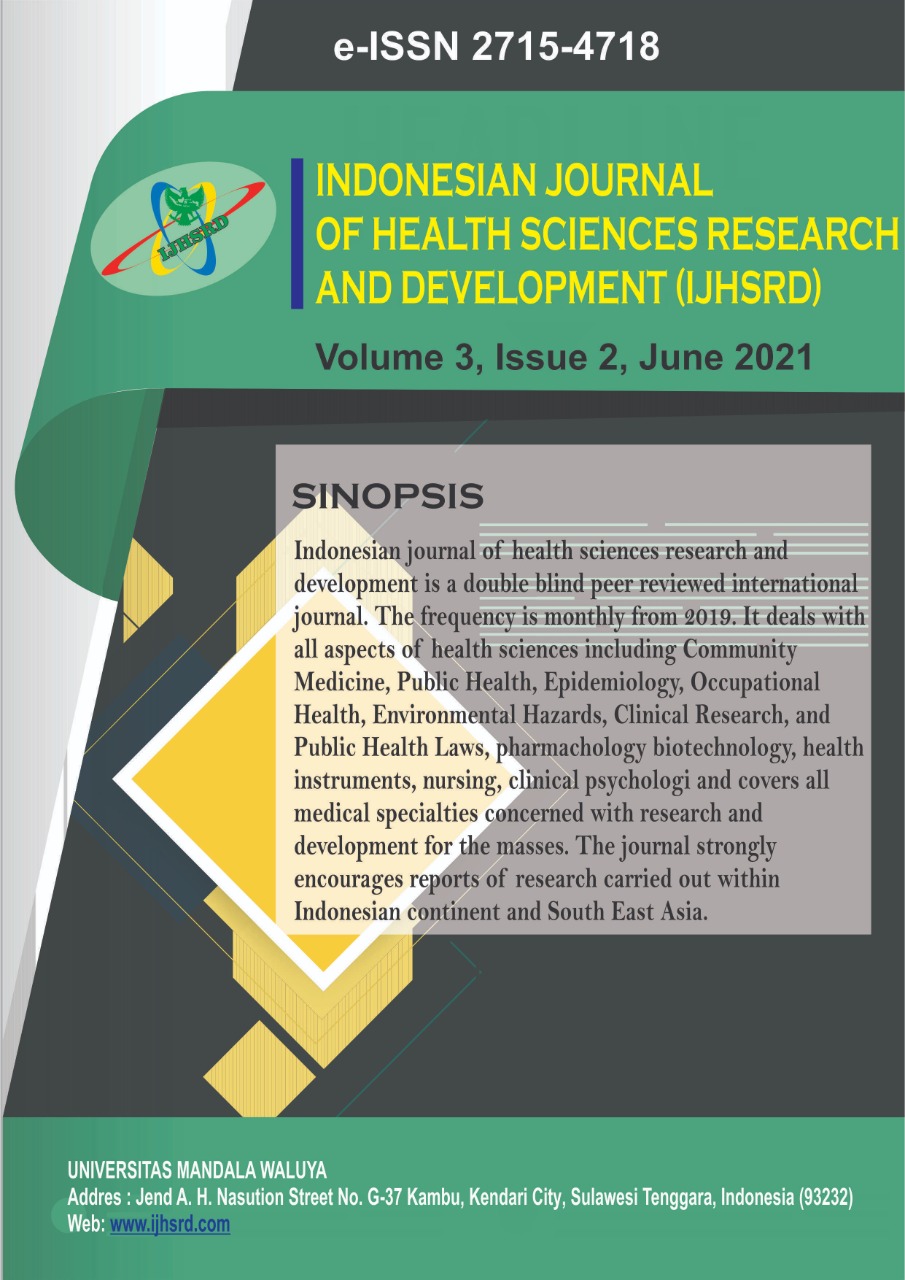Main Article Content
Abstract
Background: Based on the preliminary interview, it shows that most of the employees have a less satisfied response with the existing leadership style at the Public health center and although most say that the leadership is very open to suggestions and criticism from their employees. Furthermore, the Public health center with a leadership style that according to some staff is less favorable, but has better service to the public than the Public health center with a leadership style that is preferred by its staff. So, the question is whether the influence of the leadership style carried out by the leadership of the Public health center, and the organizational culture that is formed will be able to influence the increase in employee productivity at each Public health center.
Methods: This research is a quantitative using cross sectional design. The research was conducted from February to March 2021 with 124 samples.
Result: It is known that there is a relationship between Authoritarian Leadership Style and Employee Performance ( X2calculation, Chi Square= 41.90> X2 table3.84), Delegation Leadership Style with Employee Performance (X2 Count or Chi Square= 57.56> from 3.84 or X2 table), Participatory leadership style with Employee Performance (X2 Count or Chi Square 26.82> of 3.84 or X2 table).
Conclusion: Authoritarian Leadership Style has a strong relationship, delegation has a strong relationship, and also participation has a strong enough relationship to the performance of employees at the Konawe District Health Center.
Keywords
Article Details

This work is licensed under a Creative Commons Attribution-ShareAlike 4.0 International License.
References
- Ermawati Y, Amboningtyas D. The Effect of Intrinsic Motivation, Communication, and Financial Compensation on Employee Performance of Video Preparation Production at PT HIT Polytron which has implications for productivity. Journal of Management. 2017; 3 (3).
- Jayadipraja EA, Prasetya F, Azlimin A, Mando WOSY. Family clean and healthy living behavior and its determinant factors in the village of Labunia, Regency of Muna, Southeast Sulawesi Province of Indonesia.Public Health of Indonesia. 2018; 4 (1): 39-45.
- Juwono PT, Subagiyo A. Water Resources and Regional Development: Water Infrastructure Supports Tourism, Energy, and Food Security Development: Brawijaya University Press; 2018.
- Ministry of Health R. Pmk No. 36 of 2015 concerning the Prevention of Fraud (Fraud) in the Implementation of the Health Insurance Program in the National Social Security System. Jakarta: Ministry of Health of the Republic of Indonesia. 2015.
- Pratama IGBA, Wiksuana IGB. The effect of firm size and leverage on firm value with profitability as a mediating variable.Management E-Journal. 2016; 5 (2).
- Agung AAG. Basic Statistics for Education. Yogyakarta: Deepublish. 2016.
- Konawe District Health Office. Konawe District Health Office Profile. Southeast Sulawesi: Konawe; 2020.
- Fadilatunnisa F. Analysis of Organizational Culture Against Branch Manager Leadership Style in Islamic Banking (Study on Bank BNI Syariah Tanjung Karang Students): UIN Raden Intan Lampung; 2020.
- Kamaluddin IHA, Patta Rapanna S. Business Administration: SAH MEDIA; 2017.
- Amril A. Effect of Work Discipline and Leadership Style on Employee Performance. Journal of Entrepreneurship. 2017; 3 (2): 59-68.
- Pious M, Firman SP. Organizational Commitment to Employee Performance: Eastern Script Publisher; 2018.
- Purwanggono CJ. The Influence of Motivation on Employee Performance to Face Competition in PT Telkom West Java.Balance: Economic, Business, Management and Accounting Journal. 2020; 17 (1): 1-11.
- Sujarwoto S, Tampubolon G. Spatial inequality and the Internet divide in Indonesia 2010–2012. Telecommunications Policy. 2016; 40 (7): 602-16.
- Hidayah S, editor Analysis of student errors in solving spldv story questions based on the steps to solve the pattern. Proceedings of the National Seminar on Mathematics Education; 2016.
- Setiawan B, Innatesari D, Sabtiawan W, Sudarmin S. The development of local wisdom-based natural science module to improve science literation of students. Journal of Indonesian Science Education. 2017; 6 (1).
- Mustofa BU. The Influence of Competence, Participatory Leadership Style and Organizational Culture on Employee Performance of Pt. Surya Segara Surabaya.Journal of Management Science (JIM). 2016; 4 (4).
- Podungge MR. The Influence of the Quality of Human Resources on Employee Productivity at PT. Hasjrat Abadi Gorontalo Branch. Thesis. 2017; 1 (931412143).
